Avaramu
In smoky Mumbai, all is “Tikka”, all is “Masala”
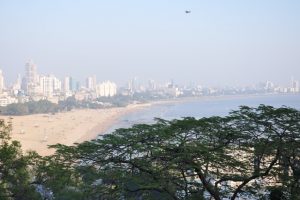 It’s December. I’m wandering around the Mumbai streets with my hands in pockets. Singing Avaramu, the famous soundtrack of Raj Kapoor’s famous movie in 1951. Just for being funny… Iphone’s weather app shows 33 degrees Celsius. For some reason Archangel Michael has fixed the temperature to 33 degrees. Every blessed day is 33 degrees Celsius. Mumbai-33 Degrees-Smoky! Yes that’s right, not cloudy, not sunny, not foggy, but smoky! Yes, the city reeks mysticism.
It’s December. I’m wandering around the Mumbai streets with my hands in pockets. Singing Avaramu, the famous soundtrack of Raj Kapoor’s famous movie in 1951. Just for being funny… Iphone’s weather app shows 33 degrees Celsius. For some reason Archangel Michael has fixed the temperature to 33 degrees. Every blessed day is 33 degrees Celsius. Mumbai-33 Degrees-Smoky! Yes that’s right, not cloudy, not sunny, not foggy, but smoky! Yes, the city reeks mysticism.
In my last article I tried to reflect the culture and cultural shock you might encounter once you arrive at India in a humorous way. But of course, India is not a country that can be described solely with those sentences. It has an enormous history and a massive culture. You can still smell the British influence in historical buildings, the train station or even the left-hand traffic, all due to 120 years of British sovereignty. Every civilization aspect brought to the country by the Brits remains as they were in those days, with hardly any change. The number of old busses and trains astound me as I saw so many together for the first time. Government service is close to null. Commotion rules on the streets. We’re talking about a gigantic country holding one seventh of the world population! India’s population is 1.252 billion. This is no joke.
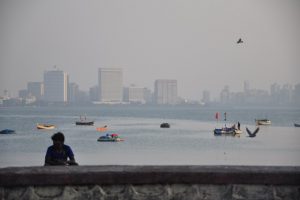 I’m in one of the most important cities of this gigantic nation, Mumbai. It’s really the smoky Mumbai! Whether be it the high population or its humidity and heat, it is in a constant mystical aura. There is a continous movement, crowd, heat, humidity, crazy traffic (I swear Istanbul traffic is nothing compared to this insanity) and of course an interesting food culture.
I’m in one of the most important cities of this gigantic nation, Mumbai. It’s really the smoky Mumbai! Whether be it the high population or its humidity and heat, it is in a constant mystical aura. There is a continous movement, crowd, heat, humidity, crazy traffic (I swear Istanbul traffic is nothing compared to this insanity) and of course an interesting food culture.
Unfortunately, I can’t give you a lot of detailed information about the Indian cuisine. It seems quite hard to master it. I came across tens of spice and tons of food names that I have never heard of before. As a chef, my purpose there was to present the European cuisine. As a chef, I can say that finding European ingredients is not very hard if you don’t have any financial concerns. There are gourmet markets selling various ingredients. You can find classical European ingredients such as a good fresh mozzarella, a real parmigiana, prosciutto, a proper feta cheese, chorizo or bacon. You encounter very good cuisines in restaurants of 5-star hotels but the figures are sky rocketing! The amount I paid for a taste menu of 5-6 different dishes served with accompanying wines in a 2-3 Michelin star restaurant in Europe, was the price I paid for a starter with 2 glasses of wine here.
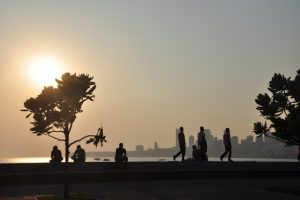 Apart from that, because my high level client already had an Indian chef and we shared the kitchen, I witnessed what’s being cooked every day in Indian cuisine.
Apart from that, because my high level client already had an Indian chef and we shared the kitchen, I witnessed what’s being cooked every day in Indian cuisine.
To start with, they never eat bread, instead they eat Naan and this is baked fresh every day right before the meal. It’s not out conventional bread, it’s a type of lavash, resembling tortilla. After some research, you find that its roots trace to Persia-Iran, Azerbaijan, Middle East, Turkish, Kurdish, everywhere. Pita and Chapati are its siblings. It’s a kind of Flatbread.
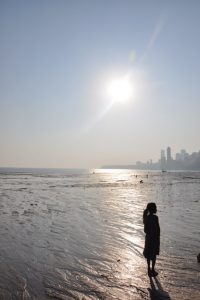 As for the food, they have a hectic list. This crazy country with a population this dense, a culture this diverse, so many religions and many main and local languages being taught in schools naturally has a 5000-year-old crazy cuisine that varies from region to region. Just like the Italian cuisine not consisting of pasta and pizza solely, just like the Turkish cuisine being so rich even though it’s thought to be only comprised of kebab and lahmacun – the enormous 800 years of Ottoman Empire usually forgotten and has to be defended by me in discussions abroad – Indian cuisine is not only made of tikka masala or chicken curry! Indian gastronomic culture is both influenced by British and Portuguese cuisines after 120 years of sovereignty, and has influence on the British cuisine even to the point of making a joke saying “chicken curry is a traditional British food!” in England.
As for the food, they have a hectic list. This crazy country with a population this dense, a culture this diverse, so many religions and many main and local languages being taught in schools naturally has a 5000-year-old crazy cuisine that varies from region to region. Just like the Italian cuisine not consisting of pasta and pizza solely, just like the Turkish cuisine being so rich even though it’s thought to be only comprised of kebab and lahmacun – the enormous 800 years of Ottoman Empire usually forgotten and has to be defended by me in discussions abroad – Indian cuisine is not only made of tikka masala or chicken curry! Indian gastronomic culture is both influenced by British and Portuguese cuisines after 120 years of sovereignty, and has influence on the British cuisine even to the point of making a joke saying “chicken curry is a traditional British food!” in England.
Yes, Garam Masala, Saffron and Curry are the most commonly used spices. They are also very familiar with Cumin and Ginger, and influenced by Persia. Their braised dishes are mainly like ours. They use a lot of potatoes, beans and chickpeas. South India is also fond of coconut, being close to the ocean. As its name implies in Turkish! (Coconut is translated as Indian Nut in Turkish language)
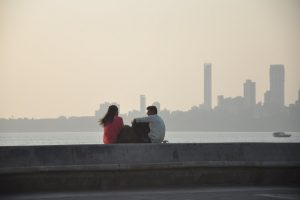 Western India is keen on lentils, being close to Iran and Pakistan. The East, being close to Far East countries like Thailand, has blended tropical fruit like papaya, bananas with crustaceans. Their main oils are olive oil and sunflower seed oil, but in the north and west, they use arachis oil, in the east mustard oil and in the south coconut oil and sesame oil. They also have some different products with unfamiliar names like Ghee they have given to Europe and America.
Western India is keen on lentils, being close to Iran and Pakistan. The East, being close to Far East countries like Thailand, has blended tropical fruit like papaya, bananas with crustaceans. Their main oils are olive oil and sunflower seed oil, but in the north and west, they use arachis oil, in the east mustard oil and in the south coconut oil and sesame oil. They also have some different products with unfamiliar names like Ghee they have given to Europe and America.
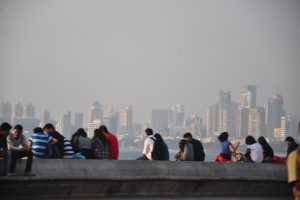 But above all, Indian cuisine definitely means rice! You can’t think of an Indian cuisine without Basmati. The locals (including the kitchen staff I work together with) always eat a large scoop of rice with their hands along with their daily staff meal, all from the round aluminum tray (not plate for some reason). No fork, no knife. This their cultural trademark.
But above all, Indian cuisine definitely means rice! You can’t think of an Indian cuisine without Basmati. The locals (including the kitchen staff I work together with) always eat a large scoop of rice with their hands along with their daily staff meal, all from the round aluminum tray (not plate for some reason). No fork, no knife. This their cultural trademark.
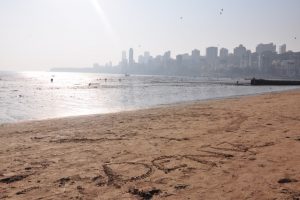 In the end, even if I write down the names of food from every region, I doubt it you can either pronounce or remember them! Just as it is with me. But all I can say is, India is a heaven of spices and a hell of gastronomic insanity!
In the end, even if I write down the names of food from every region, I doubt it you can either pronounce or remember them! Just as it is with me. But all I can say is, India is a heaven of spices and a hell of gastronomic insanity!